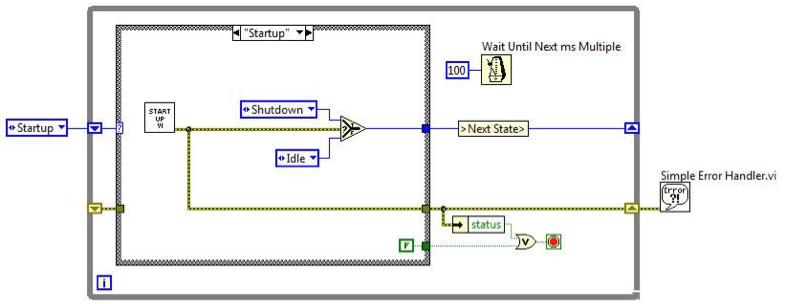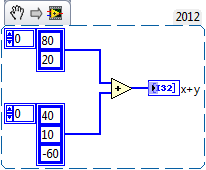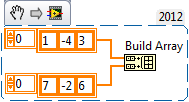The following block diagram represents which common type of VI architecture?

- Multiple Case Structure VI
- General VI
- State Machine VI
- Parallel Loop VI
The following block diagram represents which common type of VI architecture?

For implementing state diagrams that allow future application scalability, the best choice for a base structure is?
Clusters provide a user with which of the following benefits?
Which of the following statements regarding the index of Arrays are NOT true?
Which of the following methods is NOT a method to create a 1-D Array?
What is the result in subarray after the following code has executed?

Which of the following statements regarding Array constants is NOT true?
What is the result of the following Array addition?

What is the output of the Initialize Array function after the following code has executed?

What is the output of the Build Array function in the following block diagram when Concatenate Inputs is selected?
